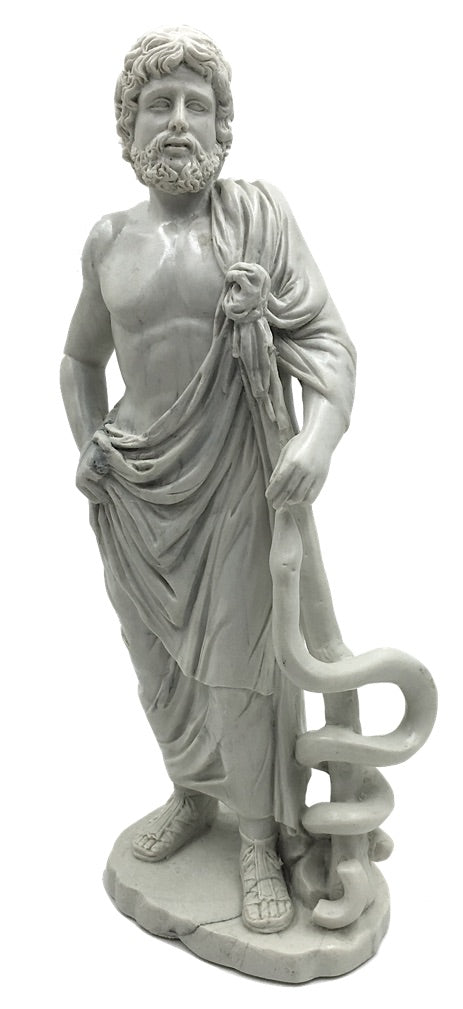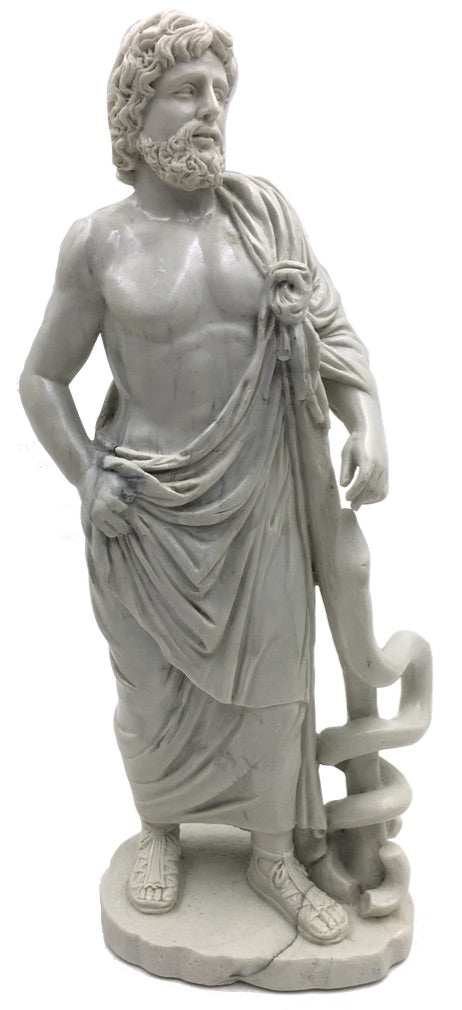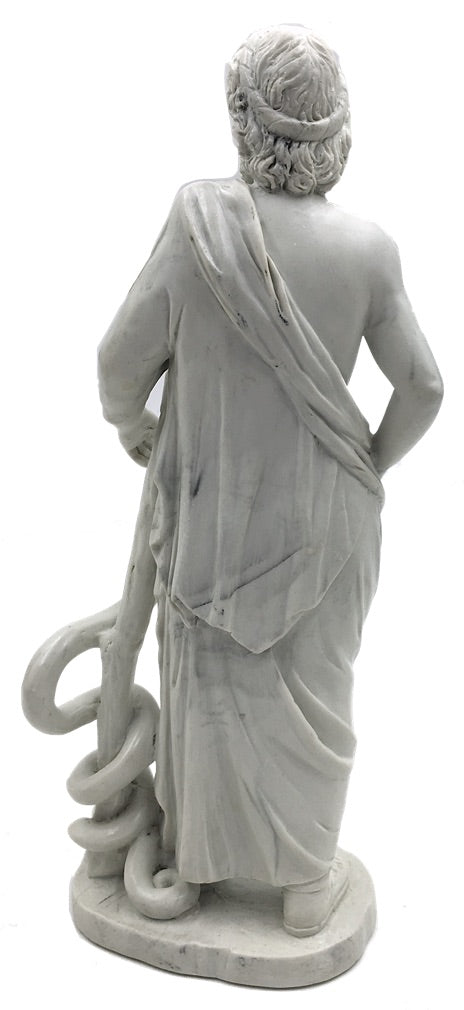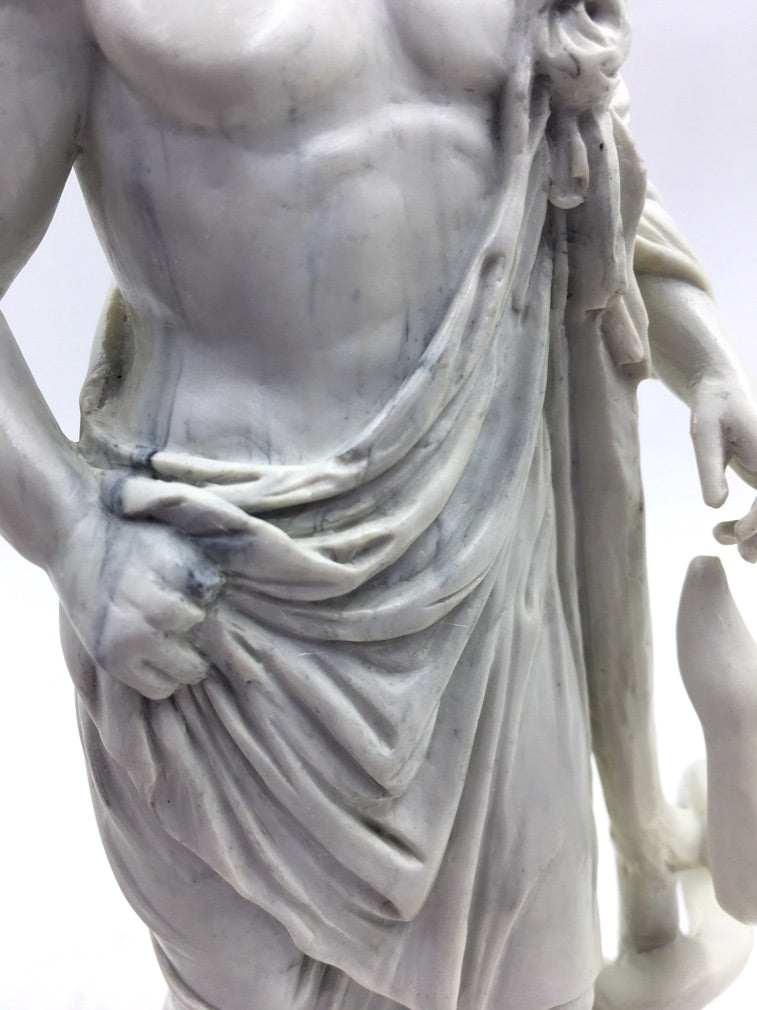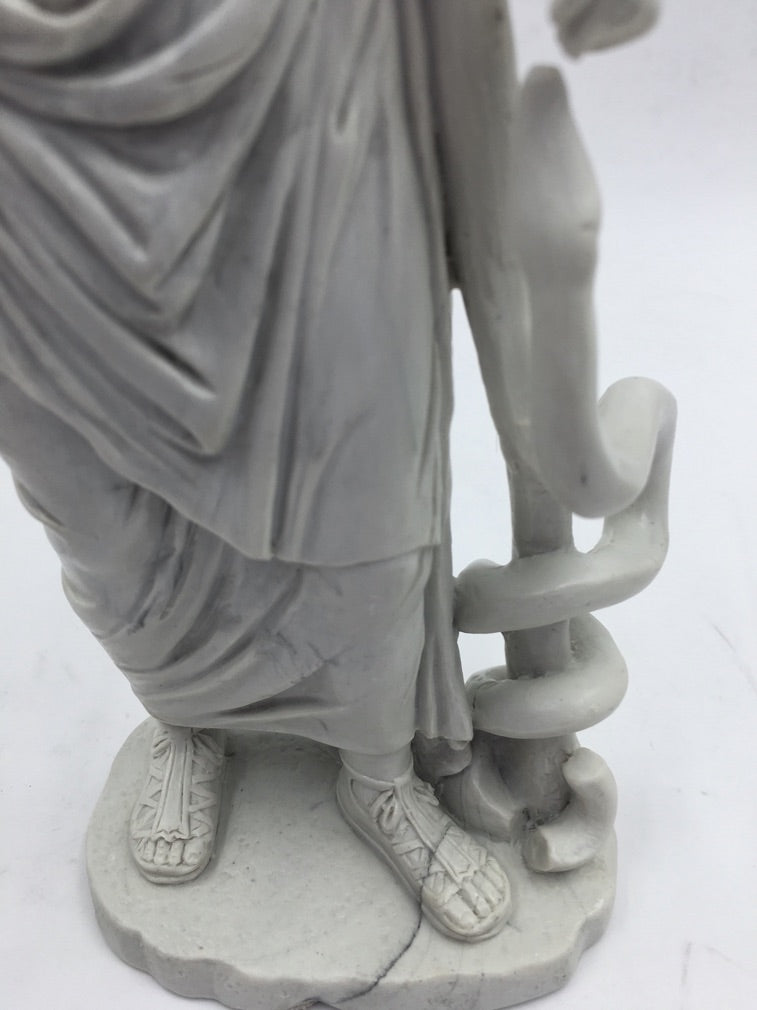Asclepius Greek Statue Replica — Parastone Museum Collection
Resin collectible with antique finish inspired by classical Greek sculpture
Product Description
This finely crafted replica depicts Asclepius, the ancient Greek god of medicine, as originally sculpted in Epidaurus between the 4th and 2nd century BCE. The figure stands holding his iconic staff entwined with a serpent, symbolizing healing and rejuvenation. Part of the Parastone Museum Collection, this statue brings classical Greek artistry into your home, office, or museum shop collection.
Key Features
- Classical Inspiration: Reproduction of a full-size Greek statue from Epidaurus, circa 4th–2nd century BCE.
- Symbolic Detail: Features Asclepius holding his staff with snake, representing healing and medicine.
- High-Quality Materials: Made from durable resin with an antique finish to mimic marble.
- Compact Display Size: Measures 8.25 in H × 4.25 in W × 2.25 in D, weighing 1 lb, perfect for shelves or desktops.
- Unique Finish: Grey streaks may appear naturally in each piece, enhancing the marble-like appearance.
- Parastone Museum Collection: Part of a line of museum-quality collectibles and reproductions.
Product Specifications
- Dimensions
- 8.25 in H × 4.25 in W × 2.25 in D
- Weight
- 1 lb
- Material
- Resin with antique marble-like finish
- Collection
- Parastone Museum Collection — museum-quality replicas
About the Original Sculpture
The original statue of Asclepius was discovered in Epidaurus, Greece, and dates back to the 4th–2nd century BCE. Asclepius was revered in ancient Greece as the god of medicine and healing, and his imagery has been a central symbol of health and wellness throughout history.






